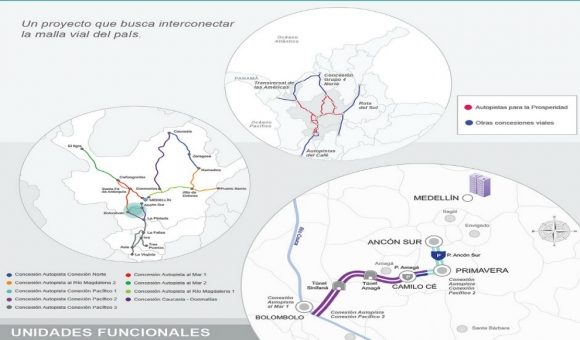Big Step Forward for Medellin, EPM: Hidroituango Spillway-Startup Marks Recovery

Medellin-based electric power giant EPM on November 4 heralded the start-up of the engineered spillway over the giant “Hidroituango” hydroelectric project in Antioquia (see photo, above).
That start-up soon will allow EPM to close a makeshift diversion tunnel through the dam, ensure steady, safe, adequate water-flow of the Cauca River downstream of the dam, and enable repairs to begin in the machine room — temporarily used to evacuate water following a collapse of the main diversion tunnel last April.
The start-up also means that Medellin eventually would start to recover billions of dollars of future revenues expected to be generated by Hidroituango, as city-owned EPM supplies about 25% of the city’s annual revenues.
“With the start-up of the spillway, a new milestone is reached in compliance with the schedule set for 2021 for the recovery of the project,” according to EPM, which also posted a video of the initial water-flow through the spillway (see: https://www.facebook.com/epmestamosahi/videos/2116900111960032/?fref=ts).
“The structure of the dam remains stable and in optimal conditions to ensure the passage of water through the spillway and the safety of the communities downstream. EPM will close the water passage through the machine house once we are fully confident that the technical conditions of the project allow it.”
The reservoir behind the dam rose to 405 meters above sea level on the afternoon of Sunday, November 4, enabling safe evacuation of Cauca River water through the spillway.
The spillway has a horizontal length of 405 meters and includes four radial gates, 15.4 meters wide by 19.5 meters high. Opening more gates enables controlled increase of water-flow through the spillway. At the bottom of the structure is a settlement well, enabling smooth, continuous flow of the Cauca River downstream of the dam.
The left channel of the spillway was the first put into operation on November 4, initially enabling evacuation of 200 cubic meters-per-second of Cauca River water.
“These 200 cubic meters-per-second are now added to the 750 cubic meters-per-second of water flowing through the machine house, for a total of 950 cubic meters-per-second on average,” according to EPM.
“This ensures an ‘ecological flow,’ or what’s necessary for a normal flow of the Cauca River, which is 450 cubic meters-per-second — and this also guarantees the safety of the communities that live downstream of the project,” according to EPM.
















